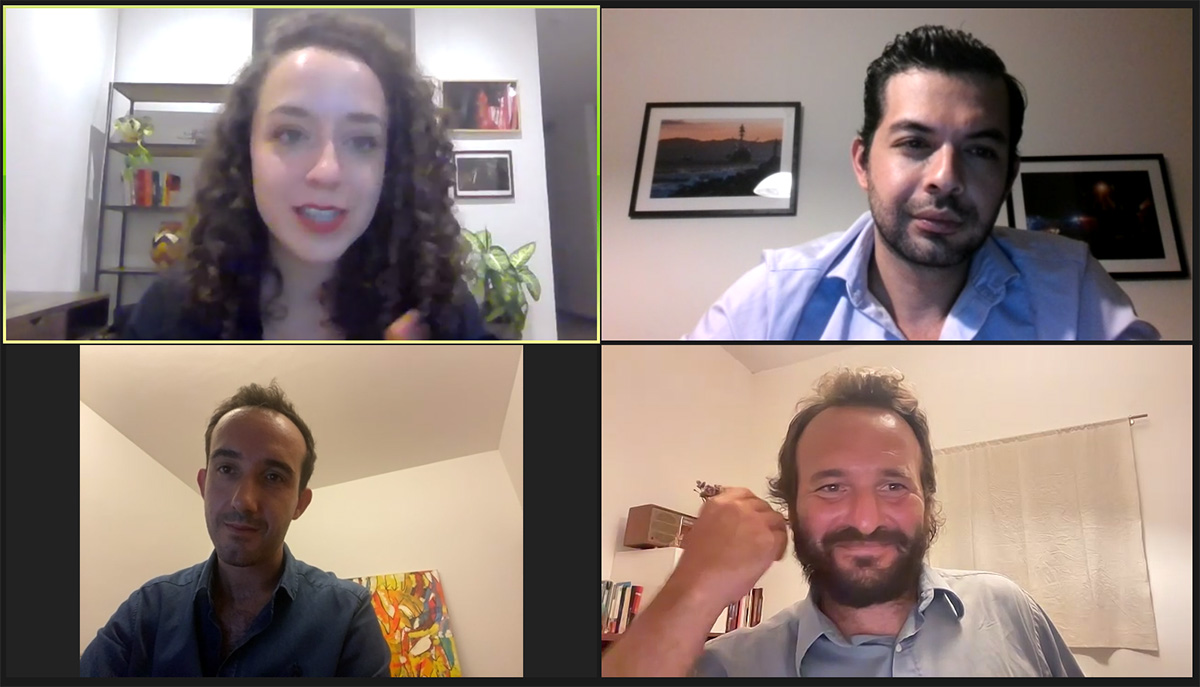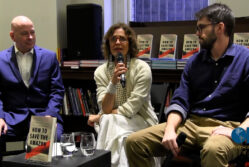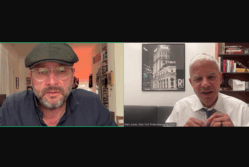Archive Event Highlight

Journalists Discuss Challenges and Complexity in Covering Unrest in Peru
by Chad Bouchard
Blocked roads, stopped trains and rising hostility toward journalists have been among the biggest challenges for correspondents covering unrest in Peru in recent months, panelists said during an OPC discussion on March 9.
The program, the third installment of the OPC’s “In the Thick of It” series on region-specific reporting challenges, included three journalists who have covered protests in Peru that ignited in December. More than 60 people have been killed in clashes since President José Pedro Castillo Terrones was ousted by the country’s Congress, fueling anger from rural Andean regions in Peru’s south against the current administration of President Dina Boluarte.
Samantha Schmidt, Bogotá bureau chief for The Washington Post, recounted how she covered strikes and upheaval in the area near Machu Picchu in the Andes mountains in January as the ancient ruins shut down and the key industry of tourism ground to a halt.
Her piece described how the crucial railway link was closed due to track damage from protestors, so she and her crew drove for five hours on a twisty road, late at night when blockades were briefly lifted, and then hiked along train tracks for three hours the next day.
Schmidt said she felt the logistical challenges were part of the story and helped to underscore effects on local residents.
“It captured to me how Peru was really at a standstill, and so was the tourism. This town was taking a hard hit,” she said. “It seemed to me that these business owners, locals, union leaders, were basically sacrificing their own livelihoods that depended entirely on tourism to Machu Piccu in order to send a message to the government.”
Alexander Villegas, senior correspondent for Reuters, also faced roadblocks during reporting trips to the affected region. He often had to negotiate with guards amid resentment toward local media, answering many questions and explaining the team’s intentions, a process that could delay them for up to three hours each time. Villegas recalled one long stop at a roadblock at 15,000 feet.
“The altitude turned out to be a big challenge. Somebody on our team got altitude sickness. That was actually a surprising challenge. When we were out interviewing, talking to people, it suddenly hit all of us at the same time,” he said.
Villegas said his team usually traveled by day because drivers can’s see rocks and debris on the road at night. He said that most of the time, the group was able to avoid attacks from protesters who distrust local journalists, once they identified themselves as international press.
“But we did get attacked by protesters in Juliaca, because there wasn’t a lot of time to explain during this protest. There was this one instance where this drunk protester took it against our cameraman and he riled up the crowd against him, and there wasn’t really time to calm things down.” One protester threw a rock at the cameraman and another started kicking him, Villegas said. They left the area as hostility toward local journalists started increasing, he added.
Rodrigo Abd, Pulitzer Prize winning photographer for The Associated Press and three-time winner of the OPC’s Best Feature Photography Award, said he is drawn to covering Peru because there are so many layers to the “very complex story.” Abd, who previously lived in Peru for nearly nine years, said current protests stem from mining conflicts in the south, fueling anger among many Indigenous groups such as Maras and Quechua that helped to elect the ousted president Castillo.
“The people are really angry because they think that even if [Castillo] was not a great president, it was their president that they elected. We’re talking in this story about very old problems in Peru,” he said. “About Indigenous people being always at the back of [political] positions in Lima.”
Peru’s economy has been growing for 20 years, Abd said, but most people have not seen the benefits and “the inequality is incredible.”
“It’s very interesting for a journalist, but it’s very bad for people. The economy is going down, the people who are facing the blockades of the protesters, they support the protesters but at the same time they are suffering. They can’t work, most of them. It’s very difficult to move products from community to community, not only for big companies. People are suffering,” he said.
Abd said he hopes for conditions to stay calmer than they were in December and January, but the political situation remains the same, and he said hostilities could worsen if the government doesn’t call new elections over the next few months.
The moderator of the program, Adam Jourdan, regional bureau chief in South Latin America for Reuters, asked the panelists about how they cope with fatigue and other physical and mental challenges while covering conflict.
“It was important to stay in constant touch with people back in our newsroom,” Schmidt said. They frequently checked in with their security team in London, “always letting them know when things were escalating during a protest, or letting them know we had gotten back safely.”
Schmidt advised reporters to pack a first aid kit and road-hardy snacks to continue working in places where businesses are shut down. She added that the most important item she packed in her survival kit ended up being a head lamp, which she used to hike with at night.
Abd said it was challenging to face blockades in cold weather, and recalled after driving for many hours one night, they came to one roadblock where residents demanded that they record a local ceremony before they drove on.
“But it was it was nice also, because we connected in another way with people. We lived those moments with them. We understood the story better. It was more complicated to work, more difficult, but at the same time it was good to go to these remote towns and talk to people.”
Villegas agreed that the strain from reporting in chaotic conditions takes a toll.
“All those things add up. It’s a lot of stress. Stress not knowing when you’re going to get there, not knowing if you’re going to be able to get through. We had car issues at one point. And then on top of that you have to file stories,” he said.
Villegas said the emotional burden from covering conflict can creep up on you, as you try to shelve your reactions in the moment and focus on the job.
“You’re going to these places that suffer these really violent, traumatic events and you’re asking people repeatedly to tell you about what is most likely the worst and most painful day in their life.”
He said after the recent difficult reporting trips, he was able to spend time with family, and took advantage of Reuters’ counseling service to help ease the emotional aftermath.
Click the window below to watch a playlist of video clips from the program.




